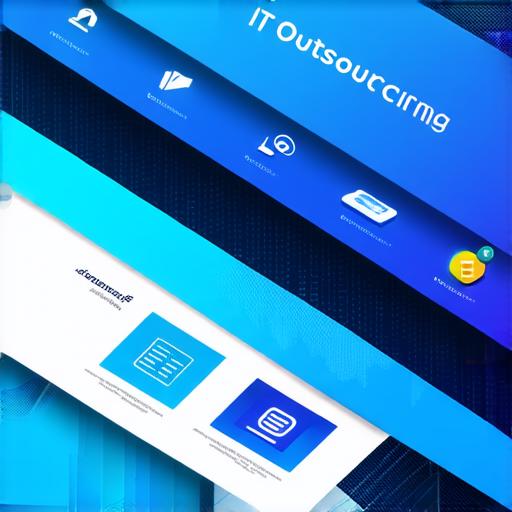Here’s the corrected HTML code for the article:
IT outsourcing has been a popular practice among businesses of all sizes for decades. In recent years, the trend towards outsourcing has accelerated due to advancements in technology and changes in the global economy. With more companies looking to reduce costs and improve efficiency, IT outsourcing is becoming an increasingly attractive option.
Introduction
IT outsourcing has been a popular practice among businesses of all sizes for decades. In recent years, the trend towards outsourcing has accelerated due to advancements in technology and changes in the global economy. With more companies looking to reduce costs and improve efficiency, IT outsourcing is becoming an increasingly attractive option.
1. The Rise of Cloud-Based Outsourcing
One of the most significant trends in IT outsourcing is the rise of cloud-based services. Cloud computing has revolutionized the way businesses operate by providing them with access to scalable, cost-effective infrastructure that can be easily accessed from anywhere in the world.
Cloud-based outsourcing allows businesses to outsource their IT needs to a third-party provider and access these services over the internet. This approach offers several advantages, including:
- Scalability: Cloud-based services are highly scalable, allowing businesses to easily add or remove resources as needed to meet changing demands.
- Cost savings: By outsourcing their IT needs to a cloud-based provider, businesses can reduce their capital expenditure and operational costs.
- Flexibility: Cloud-based services can be accessed from anywhere in the world, giving businesses the flexibility to work remotely or collaborate with team members across different time zones.
2. The Importance of Security in IT Outsourcing
Security is a critical concern for any business that outsources its IT needs. With data breaches becoming more common and sophisticated cyber attacks on the rise, businesses must ensure that their sensitive information is protected at all times.
To achieve this, businesses are increasingly turning to IT outsourcing providers that specialize in security services. These providers offer a range of security solutions, including:
- Network security: Protecting against malware, viruses, and other security threats that can compromise network infrastructure.
- Data encryption: Ensuring that sensitive data is protected from unauthorized access by encrypting it before transmission or storage.
- Compliance: Meeting industry-specific regulations such as GDPR and HIPAA by implementing robust security protocols and procedures.
3. The Role of Automation in IT Outsourcing
Automation is another key trend in IT outsourcing that is gaining popularity among businesses. By automating routine tasks, businesses can free up their employees to focus on more strategic initiatives while reducing the risk of human error and increasing efficiency.
IT outsourcing providers offer a range of automation services, including:
- Infrastructure automation: Automating the provisioning, configuration, and management of IT infrastructure to reduce manual intervention and improve scalability.
- Application automation: Automating the testing, deployment, and management of applications to reduce time-to-market and increase reliability.
- Process automation: Automating routine business processes such as invoicing, onboarding, and customer service to reduce costs and improve efficiency.
4. The Benefits of Nearshore Outsourcing
Nearshore outsourcing is another trend in IT outsourcing that is gaining popularity among businesses. This approach involves outsourcing IT needs to a provider located in a nearby country or region, rather than to a provider located halfway around the world.
There are several benefits to nearshore outsourcing, including:
- Time zone advantages: Working with providers located in nearby time zones can reduce communication barriers and improve collaboration, as team members can work together more efficiently.
- Cultural compatibility: Nearshore providers are often culturally closer to businesses, which can make it easier to understand their needs and work together effectively.
- Language support: Many nearshore providers offer bilingual or multilingual services, making it easier for businesses to communicate with them and work with teams that speak multiple languages.

Case Study: XYZ Corporation’s IT Outsourcing Journey
XYZ Corporation is a global manufacturing company that was looking to reduce costs and improve efficiency by outsourcing its IT needs. The company had been struggling with high operational costs and slow adoption of new technologies, which were hindering its ability to compete in the global marketplace.
The company decided to outsource its IT needs to a cloud-based provider located in a nearby country, rather than to a provider located halfway around the world. This approach offered several advantages, including:
- Reduced costs: By outsourcing its IT needs to a cloud-based provider, XYZ Corporation was able to reduce its capital expenditure and operational costs by moving away from expensive on-premises infrastructure.
- Improved efficiency: The company’s IT team was able to focus on more strategic initiatives by outsourcing routine tasks to the cloud-based provider. This allowed them to allocate resources more efficiently and improve their productivity.
- Enhanced security: By working with a nearshore provider that specialized in security services, XYZ Corporation was able to ensure that its sensitive data was protected at all times.
Summary
IT outsourcing is becoming an increasingly popular practice among businesses of all sizes due to the benefits it offers, including reduced costs, improved efficiency, and enhanced security. In this comprehensive guide, we have explored some of the latest trends in IT outsourcing and how they can benefit businesses.
FAQs:
Here are the FAQs for the article:
